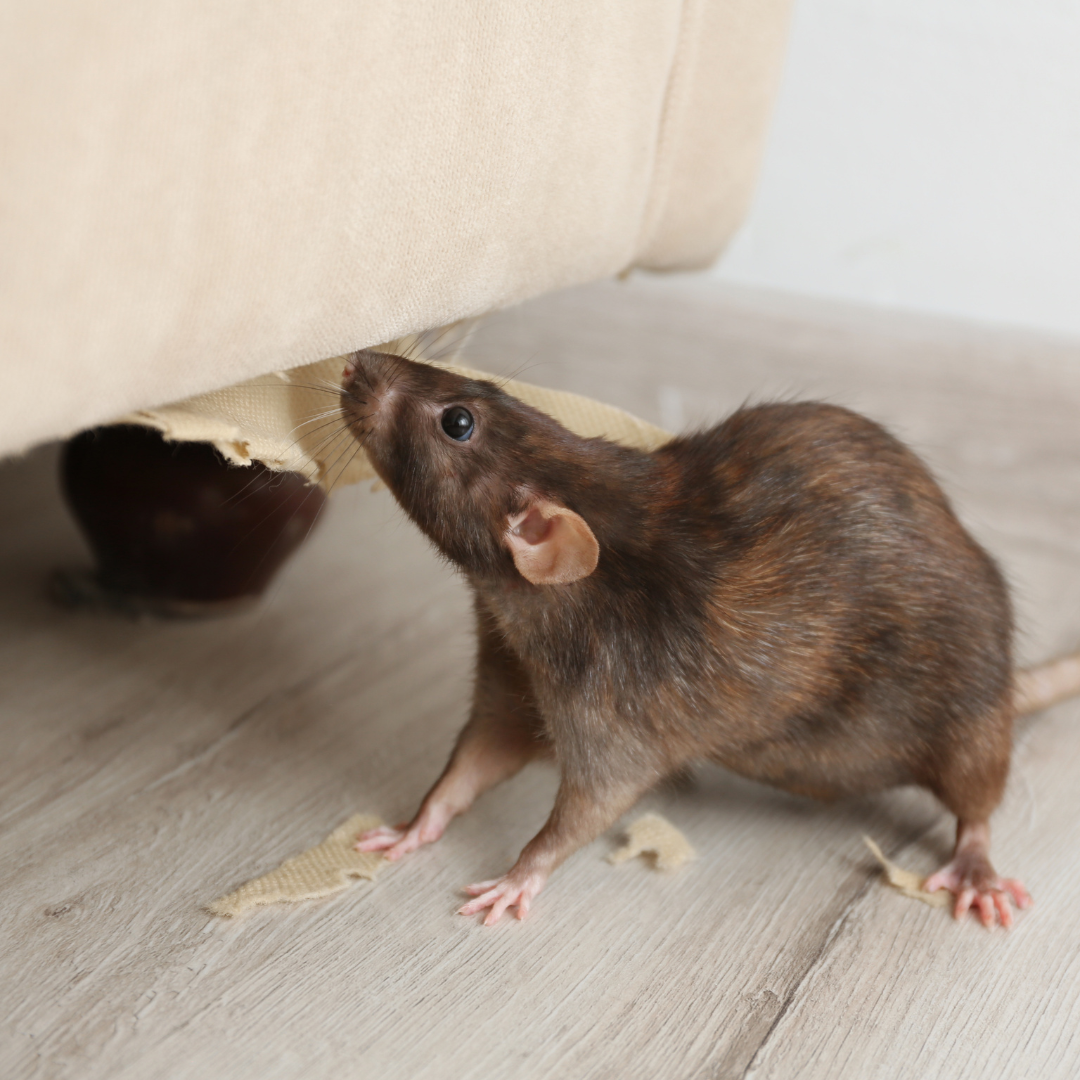Norway Rat

Proud Supporter of Disabled Veterans
No Contracts
Services provided without written contracts.
Introduction to
Norway rats, also known as brown rats or sewer rats, are one of the most common and troublesome rodents worldwide. These pests can cause significant structural damage and pose serious health risks due to their ability to contaminate food and spread diseases. This guide provides detailed information on how to recognize, understand, and manage Norway rats, including preventive measures and professional pest control solutions.
Recognition
Norway rats (Rattus norvegicus) are large rodents, typically measuring about 7 to 9.5 inches in body length, with an additional 6 to 8 inches of tail. They have a robust, heavy build with coarse, brownish fur and a lighter gray or white underside. Their ears are small and close-set, and their tails are shorter than their bodies and appear scaly. Norway rats can be distinguished from roof rats by their larger size, heavier build, and shorter tails. Their droppings are capsule-shaped, about 3/4 inch long, and can often be found along their runways.
Biology
Norway rats belong to the family Muridae and have a relatively short lifespan, typically living for about one year in the wild. They reproduce rapidly, with females capable of producing up to 7 litters per year, each containing 8 to 12 young. Norway rats undergo a typical rodent life cycle, with young rats maturing quickly and becoming sexually active within two to three months. They are omnivorous, feeding on a wide variety of food sources, including grains, fruits, meats, and garbage. They have strong teeth that can gnaw through wood, plastic, and even soft metals, causing significant structural damage.
Habits
Norway rats are nocturnal and prefer to live in burrows or other protected areas. They are excellent burrowers and often dig extensive tunnel systems under buildings, along foundations, and in gardens. They are also good swimmers and can enter buildings through sewer lines. Norway rats are known for their neophobic behavior, meaning they are cautious of new objects or changes in their environment, making them challenging to control. They typically nest in lower parts of buildings, such as basements and crawl spaces, but they can also inhabit outdoor areas like fields, gardens, and trash heaps. Their presence can be detected by gnaw marks, droppings, and greasy rub marks along their runways.
Prevention
Preventing Norway rat infestations involves eliminating food sources, water, and shelter while also sealing entry points. Store food in airtight containers and clean up spills promptly to reduce attractants. Dispose of garbage regularly and keep trash cans tightly sealed. Maintain a clean and clutter-free environment, particularly in storage areas, basements, and attics. Seal cracks and gaps around doors, windows, foundations, and utility pipes to prevent rats from entering. Regularly inspect and maintain door and window screens, and ensure that sewer lines and drainage systems are in good repair. Outdoors, keep vegetation trimmed back from the house and remove debris and clutter where rats can hide.
Professional
When Norway rats become a persistent problem, professional pest control services can offer effective solutions. STL Pest Control provides comprehensive inspections and tailored treatment plans to address Norway rat infestations. Their methods include identifying and sealing entry points, using traps and baits to eliminate existing rats, and implementing long-term prevention strategies. Professional services ensure that the infestation is managed efficiently and safely, reducing the risk to humans and pets and minimizing the potential health hazards associated with Norway rats.



Our Office







